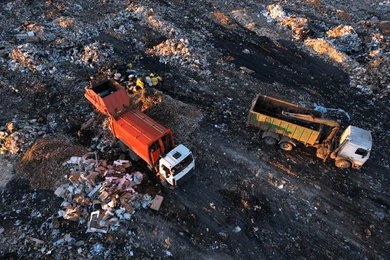Did you know that up to 75% of landfill waste could be recycled or composted? Yet, millions of tons of reusable materials end up buried every year, polluting our planet and wasting valuable resources. The problem isn’t a lack of technology—it’s awareness, infrastructure, and habits. But by understanding how much waste in landfills could be recycled, we can take action to reduce trash, conserve resources, and build a sustainable future.
In this article, we’ll uncover:
✔ The staggering percentage of recyclable waste in landfills
✔ Which materials are most commonly wasted
✔ The economic and environmental cost of landfill waste
✔ Actionable steps to boost recycling rates
Let’s dive in and turn waste into worth!
How Much Waste in Landfills Could Be Recycled? The Alarming Statistics
Landfills are overflowing, yet a massive portion of their contents should never have been buried. According to the EPA, about 146 million tons of municipal solid waste (MSW) were landfilled in 2018—but over 50% of it was recyclable or compostable.
Breakdown of Recyclable Waste in Landfills
| Material | Percentage in Landfills | Recyclable? |
| Paper & Cardboard | 23% | Yes |
| Food Waste | 22% | Compostable |
| Plastics | 19% | Yes (most) |
| Metals | 9% | Yes |
| Glass | 5% | Yes |
| Textiles | 6% | Partially |
Source: EPA 2018 Waste Report
This means at least 75 million tons of waste could have been recycled annually—enough to fill 60,000 Olympic-sized swimming pools!
Why Is So Much Recyclable Waste Still Going to Landfills?
Despite recycling programs, much usable material ends up buried. Here’s why:
1. Contamination in Recycling Streams
- Food residue on containers makes them unrecyclable.
- Non-recyclable plastics (like styrofoam) mix with good recyclables, ruining entire batches.
2. Lack of Convenient Recycling Programs
- Many areas lack curbside recycling or composting.
- Some cities don’t accept certain materials (e.g., glass, certain plastics).
3. Consumer Confusion
- “Wishcycling” (tossing non-recyclables in the bin) causes contamination.
- Misleading labels (e.g., “biodegradable” plastics that don’t break down in landfills).
4. Economic Factors
- Low oil prices make virgin plastic cheaper than recycled.
- Some countries export waste instead of processing it locally.
The Environmental & Economic Cost of Wasted Recycling Opportunities
When we don’t recycle, we pay a steep price:
🌍 Environmental Impact
- More greenhouse gases: Decomposing organics in landfills produce methane, 25x worse than CO₂.
- Resource depletion: Mining metals and cutting trees when recycled materials exist.
- Ocean pollution: Plastics from landfills often end up in waterways.
💰 Economic Losses
- $11.4 billion worth of recyclable metals are landfilled yearly.
- Recycling creates 10x more jobs than landfilling.
- Taxpayers spend $10 billion+ annually managing landfills.
How to Reduce Landfill Waste & Boost Recycling Rates
The good news? We can fix this. Here’s how:
♻️ Individual Actions
✔ Sort waste correctly (know your local recycling rules).
✔ Compost food scraps (reduces landfill methane).
✔ Avoid single-use plastics (opt for reusable containers).
🏭 Policy & Industry Changes
✔ Extended Producer Responsibility (EPR): Make brands responsible for packaging waste.
✔ Better recycling infrastructure: Invest in sorting facilities.
✔ Standardized labeling: Clear “recyclable” or “compostable” tags.
📊 The Future of Waste: Zero-Waste Cities
Cities like San Francisco (80% diversion rate) and Kamikatsu, Japan (90% recycled) prove zero-waste is possible with:
- Mandatory composting
- Pay-as-you-throw trash programs
- Bans on non-recyclable plastics
Final Thoughts: How Much Waste in Landfills Could Be Recycled?
The answer is clear: Most of it. With better habits, policies, and technology, we could slash landfill waste by 75% or more. Every recycled bottle, composted banana peel, and repaired gadget helps.
Will you be part of the solution? Start today by:
- Auditing your trash (what can you recycle or compost?)
- Advocating for better recycling programs in your community.
- Supporting brands that use recycled materials.
Together, we can turn waste into a resource—not a crisis.
📌 Key Takeaways:
✅ ~75% of landfill waste is recyclable or compostable.
✅ Contamination, confusion, and lack of access hinder recycling.
✅ Recycling cuts pollution, saves money, and creates jobs.
✅ Small changes + systemic shifts = massive impact.
What’s one thing you’ll recycle today? Let’s make every piece count! ♻️

